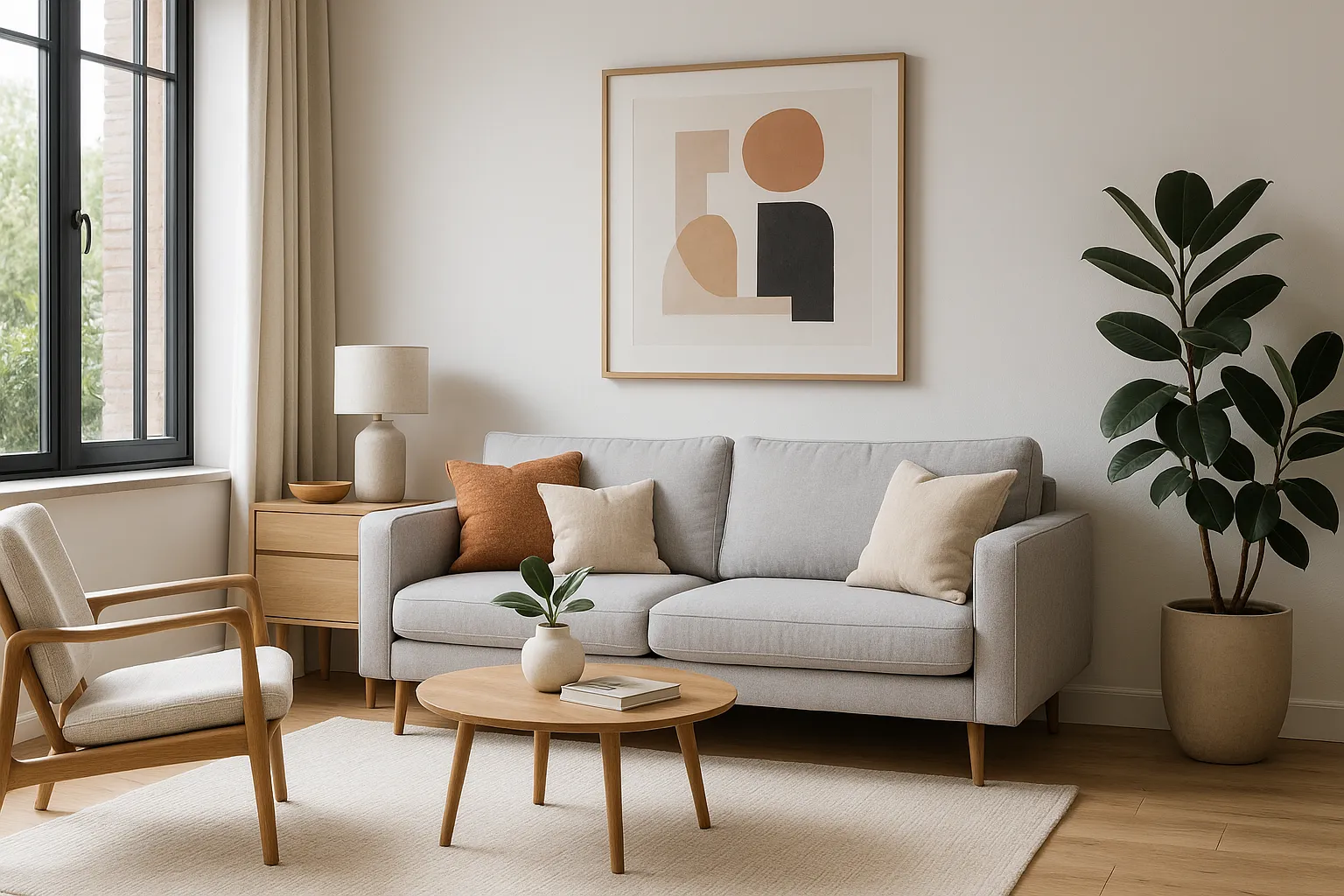Choosing the right furniture for your home is about more than just aesthetics. It’s a balance between size, function, comfort, and design style. The right pieces can transform your space into a beautiful, functional, and comfortable environment. In this guide, we’ll walk through essential tips to help you select furniture that complements your home’s layout and reflects your personal style.
Start with Function First
Before thinking about colors and styles, consider how each piece of furniture will be used. Every room has different needs, and your lifestyle should guide your choices.
Ask Yourself:
- What are the main activities in this room (e.g., relaxing, working, entertaining)?
- How many people will use this space regularly?
- Do you need additional storage?
- Will the furniture be moved often or stay in place?
By focusing on function first, you’ll choose pieces that make your life easier and your space more livable.
Measure Your Space Carefully
It’s crucial to know the exact dimensions of your room before purchasing any furniture. Oversized pieces can overwhelm a space, while items that are too small can feel awkward and leave areas underutilized.
Measuring Tips:
- Measure wall-to-wall, floor-to-ceiling, and corner-to-corner.
- Account for architectural features like windows, doors, and heating vents.
- Leave walking space between pieces (at least 60–80 cm is ideal).
- Use painter’s tape or paper templates to visualize scale on the floor.
Having accurate measurements will help you shop with confidence and avoid costly returns.
Choose a Consistent Style
Your furniture should complement the overall design aesthetic of your home. While mixing styles can work, having a general theme creates a sense of flow and cohesion.
Popular Styles:
- Modern: Clean lines, minimalism, neutral colors, and sleek finishes.
- Scandinavian: Light wood, soft colors, and functional simplicity.
- Bohemian: Eclectic, colorful, and layered with textures.
- Mid-Century Modern: Tapered legs, organic shapes, and warm woods.
- Traditional: Rich finishes, elegant details, and timeless silhouettes.
Pick one dominant style and mix in smaller accents from others to create personality.
Focus on Quality Over Quantity
It’s better to invest in fewer high-quality pieces than to fill your space with cheap, disposable furniture. Well-made furniture lasts longer, feels better, and looks more sophisticated.
What to Look For:
- Solid wood or high-quality MDF (avoid particleboard when possible).
- Strong joints and stable frames.
- Durable upholstery with double stitching.
- Reputable brands with warranties.
If your budget is tight, prioritize key pieces like a sofa, bed, or dining table and save on secondary items.
Match Furniture to Room Size and Proportions
Proportion is everything when it comes to furniture placement. Your pieces should match the size of your room and feel balanced in the layout.
Examples:
- In a small living room, opt for a loveseat or apartment-sized sofa.
- Choose a round dining table for tight corners or eat-in kitchens.
- Use a narrow console table in hallways or entryways.
- Pair tall ceilings with taller headboards or large artwork to fill vertical space.
Avoid cluttering the room—empty space is just as important for creating comfort and visual clarity.
Use Multi-Functional Pieces
In modern homes, especially small apartments, furniture often needs to serve more than one purpose.
Smart Furniture Choices:
- Storage ottomans for seating and organization.
- Sofa beds for guests in small spaces.
- Dining tables with built-in leaves to extend for guests.
- Bookshelves used as room dividers.
These pieces save space while maximizing functionality and comfort.
Choose a Color Palette That Complements Your Decor
Color plays a big role in the feel of your space. Neutral colors are versatile and timeless, while bold colors can add personality and flair.
Color Tips:
- Use neutrals for large items (sofas, beds, dining tables) for flexibility.
- Add pops of color with accent chairs, pillows, rugs, or decor.
- Match tones to your existing walls, floors, and lighting.
- Use contrasting colors to make a piece stand out as a focal point.
Choose colors that you’ll enjoy long term, not just what’s trendy.
Pay Attention to Texture and Material
Material choice affects not only the look of a piece but also how it feels and performs over time.
Common Materials:
- Wood: Warm, classic, and long-lasting.
- Metal: Modern and sleek, often used in minimal or industrial styles.
- Fabric Upholstery: Soft and cozy, available in many colors.
- Leather or Faux Leather: Easy to clean, luxurious look.
- Glass or Marble Tops: Elegant and sophisticated, great for dining or coffee tables.
Texture adds visual interest and balance to a room. Don’t be afraid to mix materials within the same space.
Test for Comfort and Practicality
A piece might look perfect online or in the showroom, but comfort is key. If possible, always test the furniture in person.
Things to Consider:
- Sit or lie on sofas and beds to test support.
- Open and close drawers or cabinets to check ease of use.
- Consider pets and children—opt for easy-to-clean materials.
- Think about how easy it is to move or rearrange if needed.
Comfort and functionality should never be sacrificed for style alone.
Final Thoughts: Balance Aesthetics and Practicality
Choosing the right furniture is about finding a balance between design and day-to-day life. With thoughtful planning, accurate measurements, and a clear understanding of your style and needs, you can furnish your home in a way that looks stunning and works beautifully for you.
Don’t rush the process. Take your time, invest wisely, and let each piece you bring into your home reflect both your personality and how you live. The result will be a home that’s stylish, functional, and truly yours.
